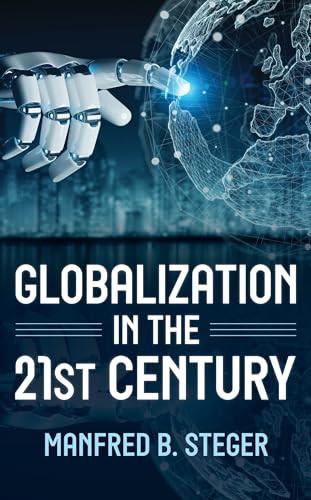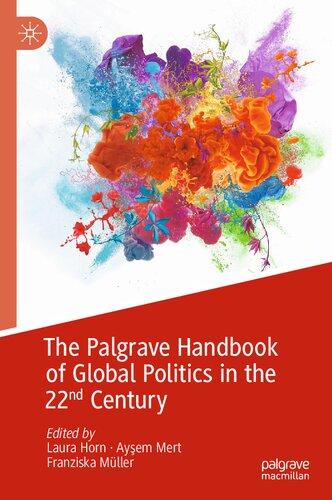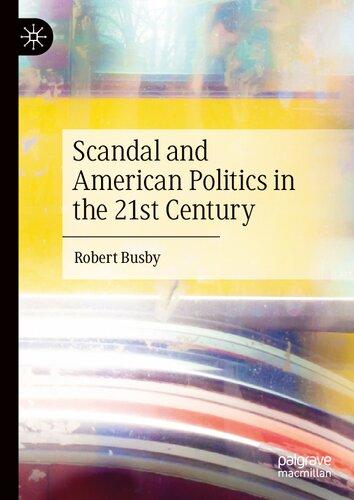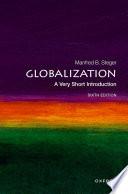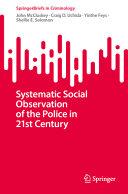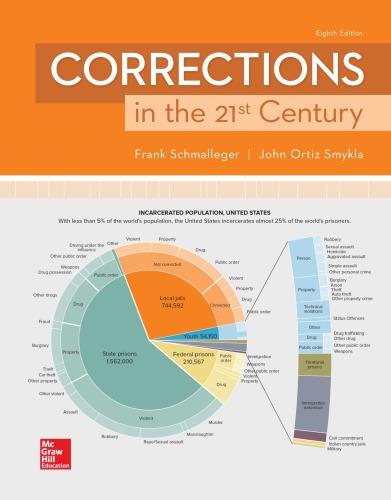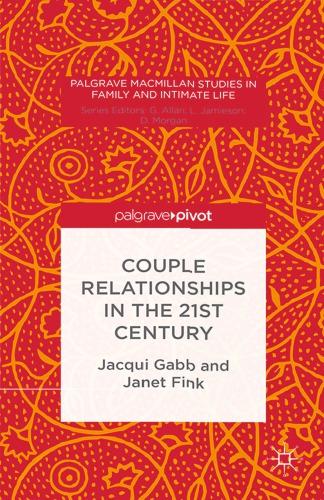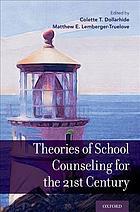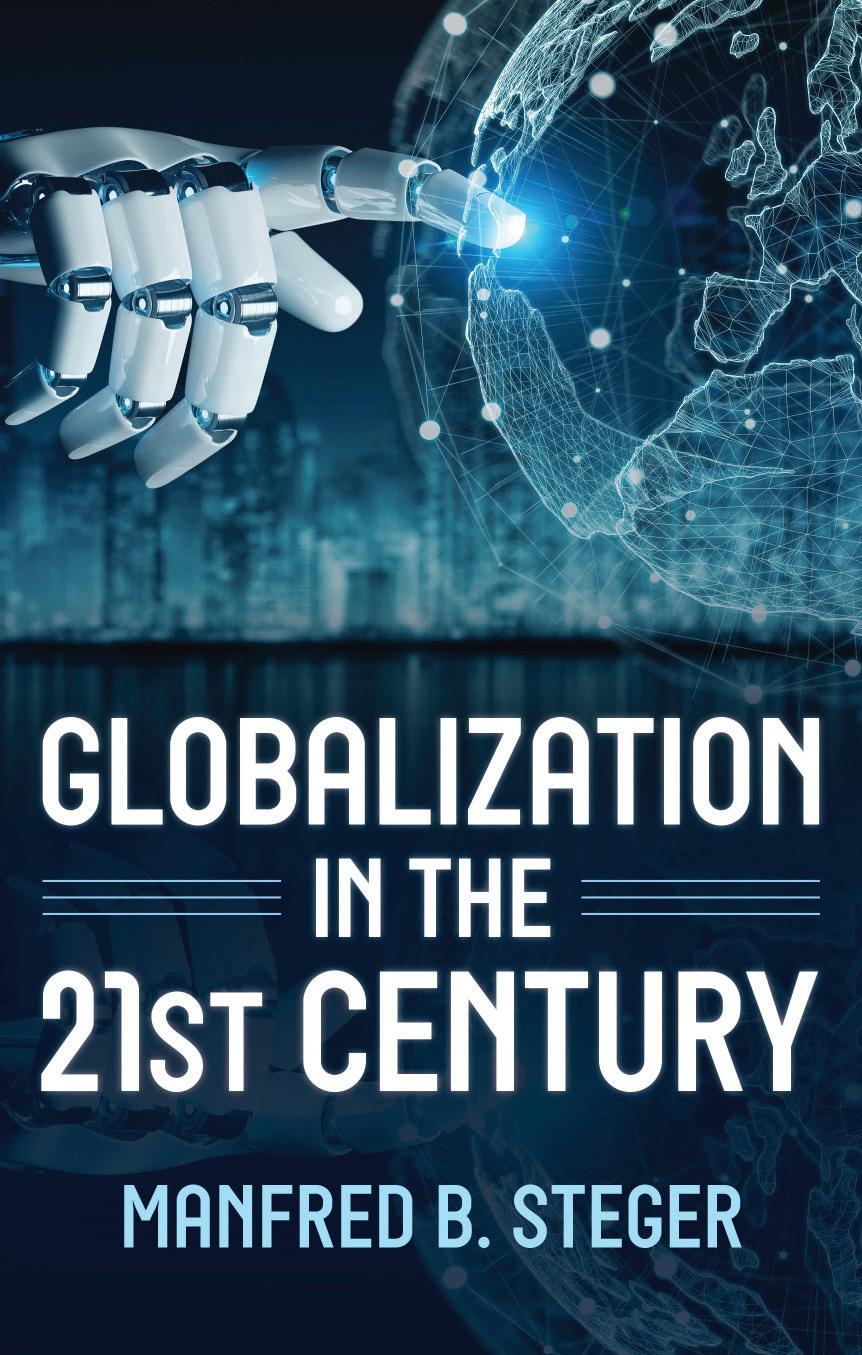Globalization in the 21st Century
Manfred B. Steger
University of Hawai’i at Mānoa
ROWMAN & LITTLEFIELD
Lanham • Boulder • New York • London
Executive Acquisitions Editor: Michael Kerns
Assistant Editor: Elizabeth Von Buhr
Sales and Marketing Inquiries: textbooks@rowman.com
Credits and acknowledgments for material borrowed from other sources, and reproduced with permission, appear on the appropriate pages within the text.
Published by Rowman & Littlefield
An imprint of The Rowman & Littlefield Publishing Group, Inc. 4501 Forbes Boulevard, Suite 200, Lanham, Maryland 20706 www.rowman.com
86-90 Paul Street, London EC2A 4NE
Copyright © 2025 by The Rowman & Littlefield Publishing Group, Inc.
All rights reserved. No part of this book may be reproduced in any form or by any electronic or mechanical means, including information storage and retrieval systems, without written permission from the publisher, except by a reviewer who may quote passages in a review.
British Library Cataloguing in Publication Information Available
Library of Congress Cataloging-in-Publication Data Available
Names: Steger, Manfred B., 1961– author.
Title: Globalization in the 21st century / Manfred B. Steger.
Other titles: Globalization in the twenty-first century
Description: Lanham, Maryland : Rowman & Littlefield, [2024] | Includes bibliographical references and index.
Identifiers: LCCN 2023041240 (print) | LCCN 2023041241 (ebook) | ISBN 9781538179727 (cloth : acid-free paper) | ISBN 9781538179734 (paperback : acidfree paper) | ISBN 9781538179741 (epub)
Subjects: LCSH: Globalization—21st century.
Classification: LCC JZ1318 .S742 2024 (print) | LCC JZ1318 (ebook) | DDC 327.09—dc23/eng/20231214
LC record available at https://lccn.loc.gov/2023041240
LC ebook record available at https://lccn.loc.gov/2023041241
The paper used in this publication meets the minimum requirements of American National Standard for Information Sciences—Permanence of Paper for Printed Library Materials, ANSI/NISO Z39.48-1992.
For Paul James, friend, intellectual partner, model scholar
Preface and Acknowledgments
The fate of globalization in the twenty-first century hangs in the balance. Although recent data show that most global integration dynamics have been on the rebound after the devastating impacts of the 2008–2009 global financial meltdown and the 2020–2023 COVID-19 pandemic, public views on globalization remain gloomy and subdued. Even some neoliberal pundits who once framed globalization as “worldwide market integration that benefits everyone” now concede that their turbocapitalist juggernaut may be running out of steam. By contrast, national-populist visions of deglobalization, topped with sprinkles of nostalgic “localism,” exert significant mass appeal. Today’s ostensible globalization backlash scenario seems to be confirmed by soaring inflation rates, recurring bank failures, global supply chain disruptions, anti-immigration backlash, accelerating climate change and ecological deterioration, lagging transitions to greener forms of energy, escalating political violence, and rising geopolitical competition among the “great powers, especially the United States–China rivalry and the protracted Russian-Ukrainian war. As UN Secretary General António Guterres reports, the world is enduring its highest number of conflicts since the end of World War II, with 2 billion people living in conflict-affected countries and the highest number of refugees on record seeking new homelands. The UN Secretary General rightly speaks of multiple cascading and intersecting crises that feed a global uncertainty complex never seen before in human history. After all, six of seven people worldwide feel insecure, a twenty-first-century trend that has been intensified by the COVID-19 pandemic and its aftermath. These people are plagued by a nagging sense that whatever control they had over their lives is slipping away. With social norms and institutions crumbling under the onslaught of social media–fanned political polarization, this growing sense of anomie is reflected in the depressing fact that fewer than 30 percent of people worldwide think that most of their fellow humans can be trusted, the lowest value on record. Some public observers of our era of the
Preface and Acknowledgments
Great Unsettling have even gone so far as to suggest that we might be in for a rerun of the Cold-War specter of total nuclear annihilation.
On the flipside, however, such doomsday scenarios reinforce the fact that most of today’s problems are global in nature. Although they cannot be separated from their concrete local, national, and regional settings, these threatening issues require a synchronized global response in the form of innovative ideas and public policies directed at the transformation of our unsustainable socioecological system. This necessary search for comprehensive solutions can hardly afford to indulge the reactionary reflex of glorifying an imagined national greatness of a mythical golden past. Instead, we need to find inspiration from uplifting global success stories such as progress in the worldwide reduction of absolute poverty and new international climate change accords. Although modest and often unenforceable, these agreements suggest that solutions to our global problems lie in more and better, not less, globalization.
For academics, the hard work of envisioning an alternative project of ethical reglobalization begins with a hard-nosed assessment of the current state of globalization. Planning for a better planetary future requires taking stock of the global present. This book, along with my published work on the subject over the last twenty-five years, represents the culmination of my own small contribution to assembling a big picture of twenty-first-century globalization that supports practical efforts of setting the globe on a more equitable and sustainable path.
The vision for this book project originated with Susan McEachern and Michael Kerns at Rowman & Littlefield Publishers. For some years now, these engaged senior editors have encouraged me to bring together in a single volume my appraisal of globalization in the twenty-first century. Following Susan’s well-deserved retirement, it has been both a privilege and a pleasure to work closely with Michael Kerns and his assistant, Elizabeth Von Buhr, to bring this long-in-the-making project to completion.
I owe a significant intellectual debt to my colleagues and students at the University of Hawai’i at Mānoa. Nothing is more important in higher education than stimulating discussions with fellow academic travelers, no matter at which stage of their professional careers they find themselves. I especially appreciate my regular conversations with my doctoral student, Margie Walkover, whose knowledge of complexity theory has expanded my own understanding of this vital subject and its links to globalization research.
I am extremely grateful for the steady stream of innovative ideas and feedback provided by Professor Paul James, a dear friend and leading globalization scholar at Western Sydney University, to whom this book is dedicated. Parts of earlier versions of some chapters appearing in this study were co-authored with Paul, who generously allowed me to draw on select passages. I also appreciate Dr. Tommaso Durante’s competent academic
Preface and Acknowledgments ix assistance in designing some illustrations that appear in this book. Tommaso’s pioneering “Visual Archive Project of the Global Imaginary” can be found at http://www.the-visual-archiveproject-of-the-global-imaginary.com.
I have been fortunate to have received steady feedback on my globalization scholarship from many other academic colleagues, including nine anonymous external reviewers of the book proposal and manuscript. For many years, numerous readers, reviewers, and audiences around the world have offered insightful comments in response to my public lectures and publications on globalization. I am deeply indebted to them for helping me to hone my arguments.
Most importantly, a deep gasshō goes to my soulmate, Perle Besserman, in recognition and appreciation of her love, understanding, generosity, support, patience, intellectual advice, and expert editorial assistance.
As indicated below, most chapters draw on previous essays published between 2002 and 2021. As I wrote them, it became increasingly clear that they were converging on a common theme: the appraisal of unfolding globalization dynamics in the early twenty-first century. However, the pertinent essays have been significantly revised, supplemented with new ideas, expanded with fresh insights, and woven together in the chapters of this book.
I want to thank the following copyright holders for permission to incorporate previously published materials in both original and revised form:
Brill Publishers: Manfred B. Steger, “Mapping Antiglobalist Populism: Bringing Ideology Back In,” Populism 2 (2019), pp. 110–36.
The University of California Press: Manfred B. Steger, “Two Limitations of Globalization Theory,” Global Perspectives 2.1 (2021): DOI: https://doi .org/10.1525/gp.2021.30035.
Taylor and Francis: Paul James and Manfred B. Steger, “On Living in an Already-Unsettled World: COVID as an Expression of Larger Transformations,” Globalizations 19.3 (2022), pp. 426–38; DOI: 10.1080/14747731.2021.1961460, https://www.tandfonline.com; and Manfred B. Steger and Paul James, “A Genealogy of ‘Globalization’: The Career of a Concept,” Globalizations 11.4 (September 2014), pp. 417–34; DOI: 10.1080/14747731.2014.951186, https://www.tandfonline.com.
Oxford University Press: Manfred B. Steger, “What Is Global Studies?” in Mark Juergensmeyer, Saskia Sassen, and Manfred B. Steger, eds., The Oxford Handbook of Global Studies (2019), pp. 3–20.
Rowman & Littlefield Publishers: Manfred B. Steger, Globalisms: Facing the Populist Challenge (2020).
Many people have contributed to improving the quality of this book; its remaining flaws are my own responsibility.
List of Figures and Tables
FIGURES
1.1. The Use of “Globalization” (1930–2010)
1.2. Four Dimensions of Neoliberalism
2.1. The Global Journey of Homo Sapiens
3.1. David Held’s Typology of Globalization
4.1. Globalisms in the Twenty-First Century
6.1. International Relations, International Studies, Area Studies, or Global Studies?
7.1. Disjunctive Globalization: Velocity
7.2. Disjunctive Globalization: Extensity
TABLES
5.1. Examples of Donald Trump’s Neoliberal Executive Orders (2017–2019)
8.1. The World’s Top Ten Carbon Dioxide Emitters (2020)
A Genealogy of “Globalization”
The sudden discursive explosion of “globalization” in the 1990s represents an extraordinary phenomenon, especially since the term did not enter general dictionaries until the 1961 Merriam-Webster Third New International Dictionary. More than half a century later, substantial dictionaries and encyclopedias of globalization as well as multivolume anthologies on the subject had been published that explore the phenomenon in all its complexities.1 In addition, thousands of books and articles on the subject were written to cover primarily the objective dimensions of globalization such as transnational economic flows, cross-cultural interactions, and the proliferation of worldwide digital networks.
We can track the burgeoning globalization literature through such big data mechanisms as the Google search engine Ngram, a mammoth database collated from more than 5 million digitized books available free to the public for online searches.2 The exceptionally rich Factiva database lists 355,838 publications referencing the term. The Expanded Academic ASAP database produced 7,737 results with “globalization” in the title, including 5,976 journal articles going back to 1986, 1,404 magazine articles starting in 1984, and 355 news items reaching back to 1987. The ISI Web of Knowledge shows a total of 8,970 references with “globalization” in the title going back to 1968. The EBSCO Host Database yields 17,188 results starting in 1975. Finally, the Proquest Newspaper Database lists 25,856 articles going back to 1971.
Since the early 2000s, there has been a proliferation of projects seeking to measure objective globalization processes with composite indices such as the A. T. Kearney Foreign Policy Globalization Index, the KOF Index of Globalization, and the DHL Global Connectedness Index.3 The latter, for example, gauges the depth and breadth of a country’s integration with the rest of the world, as manifested by its participation in transnational flows of products and services (trade flows), capital (investment flows), information (electronic data flows), and people (tourism, student, and migrant flows).
Depth refers to the size of international flows as compared to a relevant measure of the size of all interactions of that type, both transnational and domestic. It reflects how important or pervasive interactions across national borders are in the context of business or life. Breadth measures how closely each country’s distribution of international flows across its partner countries matches the global distribution of the same flows in the opposite direction. The breadth of a country’s merchandise exports, for example, is measured based on the difference between the distribution of its exports across destination countries versus the rest of the world’s distribution of merchandise imports. These country-level results are aggregated using the overall flows as weights to determine the overall level of depth and breadth of globalization.
Moreover, the DHL Global Connectedness Index is built primarily from internationally comparable data from multi-country sources, with additional data drawn from national statistics. Worldwide depth ratios are calculated using published estimates for the world, rather than being aggregated from individual countries’ reported data. Worldwide breadth estimates are calculated using reporting country data on interactions with all partners. In cases where adequate data are not available from a reporting country, but sufficient coverage can be achieved by using flows in the opposite direction as reported by partners, this method is used to calculate breadth. Finally, overall depth and breadth scores are computed using sophisticated weighting schemes.4
While quantitative measurements of the material aspects of globalization are certainly important, this opening chapter starts laying the foundation of our assessment of globalization in the twenty-first century by investigating the construction of subjective meanings associated with our keyword. This genealogical inquiry proceeds along the lines of three main guiding questions. When and how, exactly, did the concept “globalization” emerge in people’s consciousness? What sorts of meanings were associated with it? Why did some of these meanings drop out over time or become relegated to a secondary status while others leapt to the top? Who were some of the key thinkers who shaped these understandings in various ways? Accepting the genealogical challenge implied in these probing questions, this chapter contributes to the historical and theoretical foundation for our assessment of globalization in the twenty-first century. Directing our analytic spotlight on the conceptual evolution of “globalization,” it covers the formative period of the keyword from the 1920s to the 1990s, which constitutes the basis of its ongoing meaning evolution in the new century. The chapter offers a careful genealogical mapping of the concept as an indispensable preliminary attempt to expand our understanding of why and how it came to matter so much by the turn of the twenty-first century.
While paying close attention to continuity in meaning formation, this chapter resists the impulse to construct linear narratives that connect “globalization” to fixed points of a single origin or a straight timeline of meaning accumulation. Rather, it settles for the more manageable goal of presenting readers with some significant “snapshots” of multiple genealogical trajectories that contribute to a better understanding of why certain meanings became dominant at the turn of the twenty-first century and how intellectuals came to use certain keywords as they grappled with the challenges of an increasingly interconnected world. Ultimately, the chapter presents an episodic sketch of continuities, crucial junctures, notable tipping points, and multiple pathways that were involved in the meaning evolution of “globalization.”
As the intellectual historian Reinhart Koselleck notes, popular concepts such as “globalization” do not simply depict objective processes but also underpin and inform distinct modes of being and acting in the world.5 Ideas and material interests continuously interact with each other and are, therefore, interrelated and mutually constitutive. Moreover, influential ideas intermingle with the objective structures of the “real world” into which they are inscribed and thus shape concrete sociopolitical practices. This power of ideas to shape realities on the ground is particularly significant during periods of transition and crisis as reflected in our current era of the Great Unsettling. Echoing Koselleck’s insights, the Marxist cultural theorist Raymond Williams refers to pivotal terms and concepts as “keywords,” which serve as potent catalysts for the formation of entire vocabularies and narratives of a given historical era.6 By the turn of the twenty-first century, “globalization” had risen from linguistic obscurity to the status of a keyword, which, for better or worse, had taken the world by storm.
THE FOUR MEANING BRANCHES OF THE FAMILY TREE CALLED “GLOBALIZATION”
While the meanings of seminal keywords such as “economics,” “culture,” or “modernity” evolved rather slowly and built upon a relatively continuous meaning base, “globalization” has had a rather short and discontinuous history, which involves a multiplicity of intellectual entry points and influences. Perhaps most surprisingly, this complex evolution goes back to meaning constellations and discursive orbits that did not always endure on the long road to academic and public prominence. Like the emergence of Homo sapiens as a species where, over many millennia, different kinds of hominids thrived side by side for some time before nearly all of them became extinct, some globalization strains turned out to be evolutionary dead-ends while others thrived. Indeed, the meaning formation of “globalization” was many branched. These
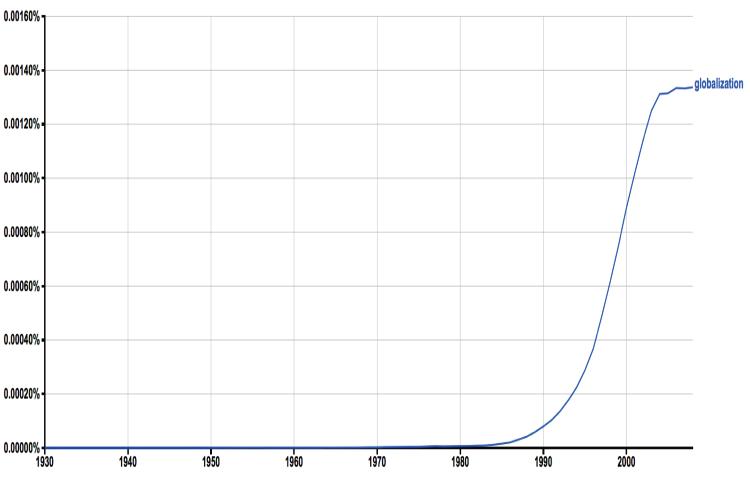
Figure 1.1. The Use of “Globalization” (1930–2010) Source: https://books.google.com /ngrams /graph ?content =globalization &year _start =1930 &year _end =2014 &corpus =15 &smoothing=3&share=&direct_url=t1%3B%2Cglobalization%3B%2Cc0
shoots were sometimes fractious and withered. Buffeted by ferocious winds of rapid social change in the twentieth century, they encountered unanticipated twists and reversals.
As social theorist Philippe Bourbeau observes, the historical evolution of major concepts and issues can best be characterized as “a disparity and diversity of meanings; some interpretations are forgotten, set aside, or defeated, while others become integrated into the construction of the dominant narrative.”7 This emergent narrative can be broad, meaning two positions at the top of key genealogical lines might be quite distant from each other. Embracing Bourbeau’s pluralistic spirit, let us adopt the popular “family tree” metaphor for our genealogical examination. However, we should do so with the aforementioned proviso that we envisioned this tree as sprouting diffuse roots and many branches in exceedingly complex patterns.
The early decades of the twentieth century witnessed a clear shift in people’s perception of the global as the modern media and communications industries were becoming acutely aware of their own transnational networks serving mass audiences. A number of newspapers around the world, particularly in Britain, the United States, and Canada, were using “globe” in their titles, such as the Boston Globe, The Globe (London), and the Globe and Mail (Toronto). From the 1920s forward, some newly constituted commercial airlines featured globes in their advertising projections. Founded in 1927, Pan
American World Airways flew under a blue globe logo until its economic collapse during a very different period of global competition in the 1990s. The Daily News—later the inspiration for the Daily Planet of Superman fame— proudly displayed a gigantic rotating globe in the massive lobby of its New York headquarters at its opening in 1930.
Already in the 1910s, many Hollywood movie studios had seized upon globes as a vital component of their corporate image. From 1912–1919, the first logo for Universal Films incorporated a stylized Earth with a Saturn-like ring. It was called the Trans-Atlantic Globe or Saturn Globe. In the 1920s, its revised logo was planet Earth floating in space with a biplane flying around it and leaving in its wake a trail of white vapor. Built in 1926, Paramount Picture’s New York headquarters was topped by an illuminated glass globe, which was later blackened in response to anticipated perils linked to World War II. In the immediate aftermath of the war—and in the spirit of celebrating the global reach of the communications industry—the Hollywood Foreign Correspondents Association initiated a series of media presentations and receptions they called the Golden Globe Awards.
It was in the critical historical period from the Roaring Twenties to the Revolutionary Sixties that the linguistic shift from “globe” and “global” to the explicit use of “globalization” evolved. The genealogical findings in this chapter reveal the existence of at least four major trajectories in the explicit meaning formation of the concept from the late 1920s to the 1990s. The first meaning branch of the family tree called “globalization” is associated with the academic fields of education and psychology, the second with sociology and cultural studies, the third in politics and international relations (IR), and the fourth in economics and business.
Education and Psychology
The pedagogical-psychological meaning branch appears to be the oldest of the four trajectories and relates primarily to notions of universalization and integration of knowledge acquisition. Its beginnings date back to late 1920s, when a first snapshot shows William Boyd employing the concept throughout his immensely influential work. The Scottish educator associated “globalization” with an innovative “holistic” approach to education: “Wholeness . . . integration, globalization . . . would seem to be the keywords of the new education view of mind: suggesting negatively, antagonism to any conception of human experience which overemphasizes the constituent atoms, parts, elements.”8 In Boyd’s usage, globalization had hardly anything to do with the world imagined as interdependent planetary space. Rather, he simply articulated a universal learning process, moving from the global whole to the local particular. It seems Boyd acquired the term by translating the French
Chapter 1
word globalisation as used by Jean-Ovide Decroly. The Belgian educational psychologist had employed the concept in the 1920s in reference to what he called the “globalization function stage” in early childhood development. Within a few years, “globalization” became a more established concept in Decroly’s “new education” movement. It was based on a holistic pedagogical method designed to teach children to read and learn—la méthode globale (“whole language teaching”).
However, over the ensuing decades, this educational and psychological meaning branch of “globalization” declined and withered save for one notable exception. In 1953, C. W. de Kiewiet, president of Rochester University, published a short article that called for the creation of a “globalized curriculum” reflecting the “realities of world conditions.”9 But the author’s fervent appeal to “globalize” American universities used the concept only in its verb form, not as a noun. Still, one is struck by the topicality of Kiewiet’s demand to globalize the curriculum, especially in light of its sudden reappearance in the 1980s and 1990s. These later initiatives eventually took root in the changing higher education environment of the 1990s and led to significant academic innovations, including the establishment of the transdisciplinary field of global studies.10 Thus, it would be fair to say that this early pedagogicalpsychological branch of meaning formation thinned out and sputtered before mutating into its contemporary discursive field of the “globalization of education.” This topical phrase signifies in the contemporary context the study of various objective globalization dynamics such as the transnationalization and rejuvenation of educational systems worldwide. Moreover, “globalization” has also become an important term in the growing pedagogical literature dedicated to the exploration of the dramatic changes that impact higher education as a result of new forms of digital technology, global rankings, and swelling international student flows.11
Culture and Sociology
Organized around cultural and sociological meanings, the second branch of the family tree called “globalization” made its appearance in the 1940s. An initial snapshot captures an example remarkable for its isolated occurrence, unusual context, and the mode in which it was delivered. In 1944, Lucius Harper, an African American editor, journalist, and early civil rights leader, published an article that quoted from a World War II letter written by an African American soldier based in Australia. The soldier conveyed his pessimistic impressions of the global dissemination of some racist American views about “Negroes”:
The American Negro and his problem are taking on a global significance. The world has begun to measure America by what she does to us [the American Negro]. But—and this is the point—we stand in danger . of losing the otherwise beneficial aspects of globalization of our problems by allowing the “Bilbos in uniform” with and without brass hats to spread their version of us everywhere.12
“Bilbos in uniform” was a snappy reference to Theodore G. Bilbo (1877–1947), a mid-century governor and US senator from Mississippi, who was an avid advocate of segregation and an openly racist member of the Ku Klux Klan. Bilbo brazenly echoed Adolf Hitler’s sentiments expressed in Mein Kampf by asserting that merely “one drop of Negro blood placed in the veins of the purest Caucasian destroys the inventive genius of his mind and strikes palsied his creative faculties.”13 At the time, Bilbo and other nationally elected representatives of the segregated South had successfully blocked a series of legislative attempts to clamp down on lynching. These racist Southern politicians sought to complement their obstructionist legislative efforts by spreading anti-Semitic rumors about an “international Jewish conspiracy,” aiding what they saw as aggressive Northern interference in Southern political affairs.
By quoting the globalization letter from a Black African American soldier serving his country in the Pacific theater, Harper’s article allowed for political mediation that increased the verisimilitude of the passage. Despite Australia’s nationally closed and race-based, White-only immigration policy, Black American soldiers in World War II were often greeted abroad with a relative openness that confronted their defensive sensibilities formed in the United States. Harper’s article appeared in the Chicago Defender, a Chicago-based newspaper primarily for African American readers. At the time, the periodical was probably the most influential newspaper of its kind in the United States, with an estimated readership of one hundred thousand.14 Overall, though, it appears that the impact of Harper’s use of “globalization” on the American press in general and the African American community in particular must have been negligible since virtually no English-language magazines picked up the term for decades after the 1940s.
A second important snapshot corresponding to this sociocultural genealogical branch of the globalization family tree occurred in an academic context that corresponded to the rise of modernization theory and structuralfunctionalist social systems. These rather abstract approaches in the social sciences were spearheaded by the American sociologists Talcott Parsons and Robert K. Merton. In 1951, Paul Meadows, a notable American sociologist who seems to have been influenced by the rising sociological paradigm, contributed an extraordinary piece of writing to the prominent academic journal,
Annals of the American Academy of Political and Social Science. Although Meadows rarely received mention in the pantheon of globalization pioneers, his article stands out for reasons that will become quickly apparent:
The culture of any society is always unique, a fact which is dramatically described in Sumner’s concept of ethos: “the sum of the characteristic usages, ideas, standards and codes by which a group is differentiated and individualized in character from other groups.” With the advent of industrial technology, however, this tendency toward cultural localization has been counteracted by a stronger tendency toward cultural universalization. With industrialism, a new cultural system has evolved in one national society after another; its global spread is incipient and cuts across every local ethos. Replacing the central mythos of the medieval Church, this new culture pattern is in a process of “globalization,” after a period of formation and formulation covering some three or four hundred years of westernization.15
This passage is worth quoting at length because it uses the concept in a more contemporary sense. Meadows’s interpretation puts “globalization” in a conductive relationship with other pivotal terms of the time such as “industrialism” and “westernization.” Moreover, his act of putting “globalization” in inverted commas suggests that Meadows was either uncertain or rather self-conscious about using this new term to illuminate changing social relations. Still, the synergy he formed between such crucial spatial signifiers as “globalization” and “localization” was extended by later globalization researchers like Roland Robertson and Saskia Sassen and suggests that the American sociologist was far ahead of his time.16
Another remarkable achievement of Meadows’s article lies in its uncanny recognition of the strong nexus connecting “globalization” with “ideology” and “industrial technology” that will be discussed in more detail in the ensuing chapters of this book. As the author points out at the end of his article’s introductory section, “The rest of this paper will be devoted to a discussion of the technological, organizational, and ideological systems which comprise this new universalistic culture.”17 Thus, Meadows was one of the first scholars to use “globalization” in a way that would become an enduring meaning a generation later. Still, his pioneering efforts to engage “globalization” in a cultural-sociological mode remained largely dormant until the 1970s and 1980s when other social thinkers started to pick up the term to refer to the “growing interdependence of all humanity” and “the globalization of human culture.”18
Politics and International Relations
The third genealogical branch of the globalization family tree is rooted in meaning clusters related to politics and international relations (IR). A 1952 snapshot reveals the use of the concept to support the worldwide expansion of the activities of newly established international organizations. Acting as a representative of the United Nations, the international law scholar Sigmund Timberg called for the establishment of a so-called international govcorps, which he envisioned as mediating institutions between the foreign policy strategies of national governments and increasingly globally operating corporations. Evidently, Timberg saw great potential in the development of cooperative structures among nations, which would transform what he called “happenstance globalization” into a deliberate, rational planning process rooted in cutting-edge management techniques. In short, a planned policy form of globalization would not only help to prevent international conflict among nations by means of increasing transborder political and economic activities, but it would also improve the efficiency and productivity of professional bureaucrats working in foreign ministries around the world.19
Similarly reflecting on the positive effects of the intensification of international relations, the American political scientist Inis Claude published a widely read article in 1965 on the future of the United Nations. Equating “universalization” with “globalization,” the international organizations expert argued, “The United Nations has tended to reflect the steady globalization of international relations.”20 In other words, rather than envisioning the creation of new organizational structures and institutions along the lines of Timberg’s international govcorps, Claude considered the United Nations as a whole as the most appropriate model for a rationally planned globalization of international cooperation. Aurelio Peccei, an Italian industrialist, philanthropist, and cofounder of the Club of Rome, picked up on Claude’s “movement toward universality” by forging an innovative link between globalization as “mentality” and globalization as “social structure.” Thus, Peccei connected the political and sociocultural meaning branches. As he put it, “The important thing, however, in my opinion is that this process of progressive globalization or planetization has itself the germ and appeal of an idée-force, because its foundations are cast in the triumphant realities of this age.”21
Around the same time, and with no reference to Claude or Peccei, an extraordinary article appeared that had the potential of changing the entire field of IR. Penned by the Polish American political scientist George Modelski, the 1968 essay discussed the connection between “globalization” to “world politics” in a comprehensive way:
A condition for the emergence of a multiple-autonomy form of world politics arguably is the development of a global layer of interaction substantial enough to support continuous and diversified institutionalization. We may define this process as globalization; it is the result of the increasing size, complexity and sophistication of world society. Growth and consolidation of global interdependence and the emergent necessities of devising ways and means of handling the problems arising therefrom support an increasingly elaborate network of organizations. World order in such a system would be the product of the interplay of these organizations, and world politics an effort to regulate these interactions.22
In the same year his article appeared, Modelski led a team of social science researchers at the University of Washington in drafting a grant application to the US National Science Foundation, which, for the first time, used “globalization” in the title of a comprehensive research project: “The Study of Globalization: A Preliminary Exploration.” Unfortunately, this highly innovative project was soundly rejected, thereby halting Modelski’s research efforts in this area for two decades. Remarkably, Modelski’s sophisticated rendition of the complex process of space-time compression had surprisingly little academic impact, even though the author defined “globalization” in a way that prefigured the heated discussions on its political dimensions during the 1990s.
At the same time, however, Modelski’s conceptualization of world order and world politics as “globalization” foreshadowed later challenges to the canonical status of the “international” in IR launched in the 1970s and 1980s by influential political scientists such as James Rosenau, Robert Keohane, and Joseph Nye.23 These scholars initially employed terms and phrases like “complex interdependence” and “transnationalism” to emphasize the changing dynamics of the international system and the roles played by reconfigured states and a growing variety of non-state actors. Recognizing the rapid transformation of the power and authority of national governments under globalizing conditions, Keohane and Nye eventually argued for a revision of IR’s key concept of national sovereignty from a territorially bounded space to a bargaining resource for politics characterized by transnational globalization networks.24
Economics and Business
The fourth genealogical branch of the globalization family tree projects economic and business meanings. Here, too, the keyword had a rather tenuous start and was used rarely and intermittently. A snapshot from the early 1960s features the use of “globalization” by François Perroux. A prominent French critic of capitalist financial and economic policies toward the Third World,
Perroux used the concept in a context clearly more akin to its contemporary dominant meaning related to the formation of integrated economic markets on a planetary scale. He referred explicitly to what he called the “mondialisation de certains marches” (“globalization of certain markets”).25 Once established, this semantic nexus linking “globalization” to “markets” managed not only to stay alive over the next few decades but began to pick up steam. For example, Michael Haider, CEO of the Standard Oil Company of New Jersey in the late 1960s, argued that there was “no limit to the globalization of American business,” which was increasingly “stretching out to developing markets in Africa, Latin America and the Far East.”26
THE NEOLIBERAL REVOLUTION AND THE “GLOBALIZATION OF MARKETS”
So far, our critical investigation has suggested that, across the middle quarters of the twentieth century, “globalization” generally figured as little more than a “loose descriptor with little analytical shape.”27 It was initially deployed with a surprising variety of meanings and in different social contexts. However, as the popular and academic discourses on the subject converged in the 1980s, “globalization” began to function as a powerful condensation symbol, capable of compressing a whole coterie of economistic ideas and notions into a single keyword. The keyword stimulated a whole host of evaluations, cognitions, and feelings about what people increasingly perceived as a shrinking world powered by free markets and new technologies.
Thus “globalization” became linked to “neoliberalism,” a term closely associated with the economic paradigm of Nobel Prize–winners Friedrich von Hayek and Milton Friedman who sought to revive the classical liberal ideal of Adam Smith and David Ricardo, early British advocates of minimal state interference in the capitalist economy. Personified by Anglo-American politicians like Ronald Reagan, Margaret Thatcher, Bill Clinton, and Tony Blair, neoliberalism reached its heyday during the 1980s and 1990s. Known as the “Washington Consensus” and enforced by international economic institutions like the International Monetary Fund and the World Bank, neoliberalism confronted poor countries in the global south with harsh rules and conditions for their economic development. Showing itself to be a remarkably versatile and adaptable doctrine, neoliberalism ate its way into the heart of the Communist world. It managed to charm not only post-Maoist Chinese leaders like Deng Xiaoping but also appealed to the Soviet reformer Mikhail Gorbachev who adopted some tenets under their deceptive slogans “socialism with Chinese characteristics” and “perestroika.” Although few political leaders publicly embraced the term “neoliberalism,” they all adopted “globalization” as an
appealing label for their neoliberal policies of deregulating national economies, liberalizing international trade, privatizing state-owned enterprises, downsizing government, and cutting income and corporate taxes. Aiming at nothing less than overthrowing the dominant postwar paradigm of Keynesian regulated capitalism, the neoliberal revolution proved to be an important catalyst that helped make the economic and business branch of the family tree the dominant meaning structure associated with “globalization.”
The closing decade of the twentieth century represented a pivotal period marked by the discursive convergence of “globalization-as-markets” talk. Up to this point, the use of the concept had occurred largely within the narrow parameters of the two distinct academic and popular discursive environments. But with the fall of Soviet-style communism and the rise of Anglo-American neoliberal economics, “globalization” was leaping into the public limelight quite suddenly and forcefully, traversing various social fields populated by academics, journalists, editors, and librarians. For example, the prominent global studies scholar Mark Juergensmeyer recalled, “A lot of talk about ‘globalization’ in the immediate aftermath of the fall of the Berlin Wall. So that would put my first encounter with the concept sometime around 1989 or 1990.” Such recognition of the convergence of academic and public discourses on the subject also characterizes the memory of the globalization expert Arjun Appadurai. He remembered encountering the concept, “In the very late 1980s—most likely sometime between 1989 and 1991. I would say it was after the fall of the Berlin Wall. The context? Most likely, I read about ‘globalization’ in the press, rather than encountering the term through an academic route.” Similarly, anthropologist Jonathan Friedman recalled, “The media were starting to use ‘globalization’ and business got into the act as well. And I remember a lot of talk about the ‘end of the nation-state,’ which
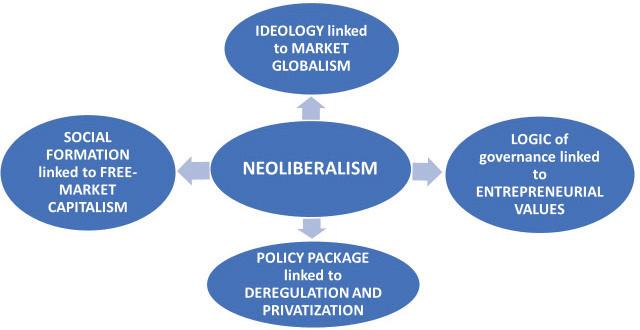
Figure 1.2. Four Dimensions of Neoliberalism
A Genealogy of “Globalization” 15 was very much linked to this new buzzword ‘globalization.’”28 Increasingly understood as an American-led process of “worldwide market integration” following the triumph of deregulated capitalism over socialist planned economies, “globalization” became the cornerstone of the emerging ideological constellation of “market globalism” examined in chapter 4.
The most influential early articulation of the neoliberal globalization-asmarket narrative appeared as early as 1983 in a Harvard Business Review article penned by Theodore Levitt. The Harvard Business School dean imbued the concept with neoliberal meanings that soon escaped their academic business school context and infiltrated the public discourse for good. The description of what Levitt considered “indisputable empirical trends” was inseparable from his neoliberal ideological prescriptions. For example, he insisted that multinational companies had no choice but to transform themselves into global corporations capable of operating in a more cost-effective way by standardizing their products across national markets. Most importantly, the necessary elimination of costly adjustments to various national markets depended on their swift adoption of a “global approach.” What Levitt had in mind was the willingness of CEOs to think and act “as if the world were one large market—ignoring superficial regional and national differences. . It [the global corporation] sells the same things in the same way everywhere.”29
Levitt’s stated imperative of economic homogenization along the lines of the Anglo-American neoliberal model inspired dozens of similar pieces in high-circulation business magazines and journals. Its authors followed Levitt’s lead in seeking to convince large companies to “go global.” The advertising industry, in particular, set about creating what they called “global brands” by means of worldwide marketing campaigns. Hence, it seems hardly surprising that the founder of the advertising giant Saatchi and Saatchi was one of Levitt’s most fervent disciples.
Levitt’s article also had a strong impact on the popular depiction of globalization as an “inevitable” or “inexorable” economic process. Mediated by new digital technologies, globally integrated markets were destined to deliver standardized consumer products on a previously unimagined scale. Among the chief popularizers of Levitt’s neoliberal interpretation of “globalization” a decade later, New York Times syndicated columnist Thomas L. Friedman stood out. The enormous impact of the journalist’s writings was magnified by his personal relationships with political and economic elites on all five continents. Friedman managed to speak to millions of readers in easily digestible sound bites that brought some order to what was often perceived as the threatening complexity and unevenness of the post–Cold War world.
Friedman presented his views on “globalization” in The Lexus and the Olive Tree, an international 1999 best-seller lionized by scores of reviewers
as the “official narrative of globalization.” He argued that the “real character” of what US president George H. W. Bush referred to as the post-1989 “new world order” boiled down to “the one big thing: globalization.” He defines the concept as the “inexorable integration of markets, nation-states, and technologies to a degree never witnessed before—in a way that is enabling individuals, corporations and nations-states to reach around the world farther, faster, deeper, and cheaper than ever before, and in a way that is enabling the world to reach into individuals, corporations, and nation-states farther, faster, deeper, and cheaper than ever before.30
Friedman’s frequent use of the adjective “inexorable” added conceptual weight to his neoliberal interpretation of globalization by suggesting that the liberalization and global integration of markets was an inevitable and perhaps even irreversible process. Indeed, he advocated the restructuring of public enterprises and the privatization of key industrial sectors, including energy, transportation, utilities, and communication: “Globalization means the spread of free-market capitalism to virtually every country in the world. Therefore, globalization also has its own set of economic rules—rules that evolve around opening, deregulating and privatizing your economy, in order to make it more competitive and attractive to foreign investment.”31 Indeed, “market” represents the core concept in Friedman’s economistic meaning formation of “globalization.” He left no doubt as to what he had in mind: “But the relevant market today is the planet Earth and the global integration of technology, finance, trade, and information in a way that is influencing wages, interest rates, living standards, culture, job opportunities, wars and weather patterns all over the world.”32
For Friedman, such neoliberal globalization was not only destined to generate prosperity and build wealth around the world but also spread American democratic principles that provide for greater political stability in the world. The promotion of liberal democracy through globalization represented a central theme in The Lexus and the Olive Tree The author linked his explanation for the transformation of the Cold War order to democratizing tendencies that allegedly inhere in new technologies like the Internet and the demise of the Bretton Woods system in the early 1970s. He spoke of “three democratizations”—technology, finance, and information—as powerful battering rams breaking down the walls around which the citizens of the old nation-states system communicate, invest, and learn about each other. Enabling the “world to come together as a single, integrated, open plain,” these dynamics were depicted as ultimately forcing all nations to integrate into a single global system dominated by the United States.33
In short, Friedman saw trade liberalization and global integration of markets inextricably intertwined with the global diffusion of American values, consumer goods, and lifestyles. Thus, The Lexus and the Olive Tree closed
A Genealogy of “Globalization” 17
fittingly with an unapologetic paean to America and its unique role in the globalizing world: “And that’s why America, at its best, is not just a country. It’s a spiritual value and role model. . . . And that’s why I believe so strongly that for globalization to be sustainable America must be at its best—today, tomorrow, all the time. It not only can be, it must be, a beacon for the whole world.”34 Friedman suggested that, culturally speaking, “globalization” was actually “Americanization,” that is, the global diffusion of American values, consumer goods, and lifestyles. This American-centered perspective gained steam throughout the 1990s and sparked the proliferation of neologisms such as “McDonaldization” or “McWorldization.”35 Global power brokers eagerly disseminated Levitt’s and Friedman’s neoliberal ideological perspective of American-led “globalization” as a beneficial economic process driven by the new digital technologies that was destined to lift millions out of poverty while furthering the spread of democracy and freedom around the globe. These elites anchored the term in a conceptual framework that provided the ammunition for the expansion of their free-market oriented political programs and agendas. As genealogical snapshots in this chapter demonstrate, these neoliberal understandings of globalization proliferated in the academic field of economics and business studies.
As advocated in this chapter, critical genealogical investigations of keywords are indispensable for dispelling potent myths of the single-point origins of globalization that are not only historically inaccurate but also serve as ideological tools designed to (re)produce hegemonic neoliberal meanings. Let us consider a final snapshot. In 2006, the New York Times featured an article headed, “Theodore Levitt, 81, who coined the term ‘globalization,’ is dead.”36 The generous obituary that followed was organized around this singular, yet false, origin claim. As demonstrated in this chapter, several globalization concepts had been in use in the English language in various senses at least as early as the 1920s and possibly even longer. Forced to admit to their error a few days later, the New York Times ran a correction that still naturalized the economistic meaning of the concept:
An obituary and headline on Friday about Theodore Levitt, a marketing scholar at the Harvard Business School, referred incorrectly to the origin of the word “globalization.” While Mr. Levitt’s work was closely associated with the idea of globalization in economics, and while he published a respected paper in 1983 popularizing the term, he did not coin the word. (It was in use at least as early as 1944 in other senses and was used by others in discussing economics at least as early as 1981.)37
Built on such an uncritical linear narrative of single origins, this New York Times snapshot also reflects a reflexive reinforcement of personality cults.
